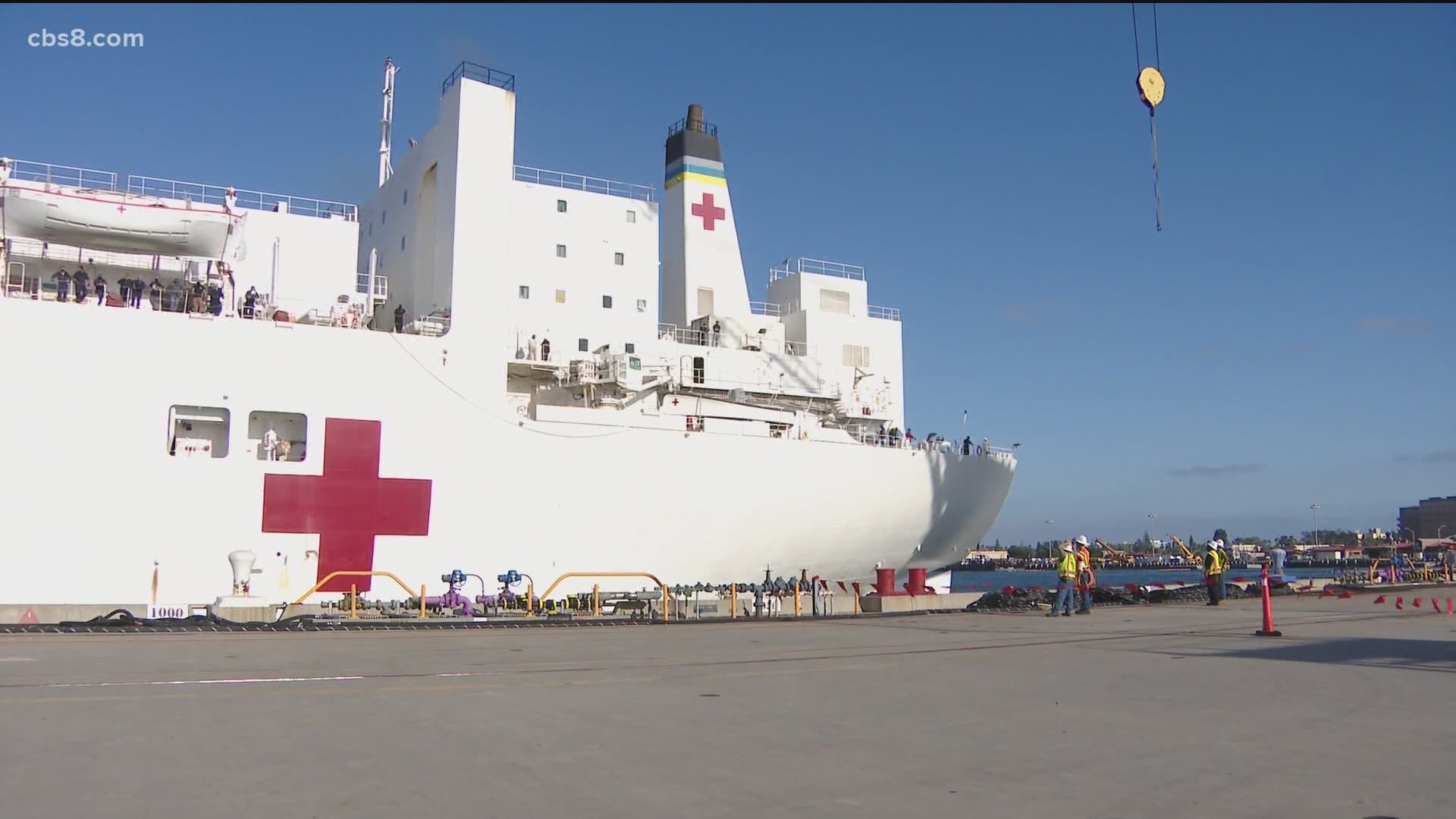SAN DIEGO COUNTY, Calif. — The San Diego-based hospital ship USNS Mercy returned to its home port Friday following nearly two months in Los Angeles, where it served as a relief valve while Southland medical centers coped with the burgeoning coronavirus pandemic.
The 1,000-bed ship left San Diego on March 23 and sailed into the Port of Los Angeles on March 27, as local health authorities prepared for a feared surge of coronavirus cases that could have overwhelmed Southland hospitals.
The ship was not brought in to treat COVID-19 cases, but to handle other patients and free up hospital beds for virus treatment. Medical personnel aboard the ship performed several surgeries during that span, including the first-ever pacemaker replacement procedure in the ship's history, according to the Navy.
The ship departed the Port of Los Angeles at about 7 a.m. and is expected to arrive in San Diego late afternoon or early evening, according to the Navy.
"The medical professionals aboard Mercy are proud and humbled to have assisted FEMA, the state of California, Los Angeles County and the city of Los Angeles, while serving as a `relief valve' to the community during the ongoing COVID-19 pandemic. Every patient brought aboard created one more available bed in a local hospital," Capt. John Rotruck, the ship's commanding officer, said in a statement. "Although USNS Mercy is departing the Port of Los Angeles, a number of our medical treatment personnel will continue our mission in Los Angeles through their support to state health care providers at various skilled nursing facilities."
The Office of Emergency Services said more than 60 of the ship's personnel will remain in the area to continue assisting local medical efforts. Four six-member medical support teams will be deployed as needed to facilities including skilled nursing homes.
Another 40 staffers will be assigned to the state's alternative care site established at the Fairview Developmental Center in Costa Mesa.
"Our work to protect public health and safety is far from done but having the Mercy and its highly trained medical personnel stationed in the most populous region of the state was critical to our ability to respond in the first stages of the pandemic," Cal OES director Mark Ghilarducci said. "We thank our colleagues in the U.S. Navy, FEMA and the federal administration for their support in allowing us to use the Mercy."

